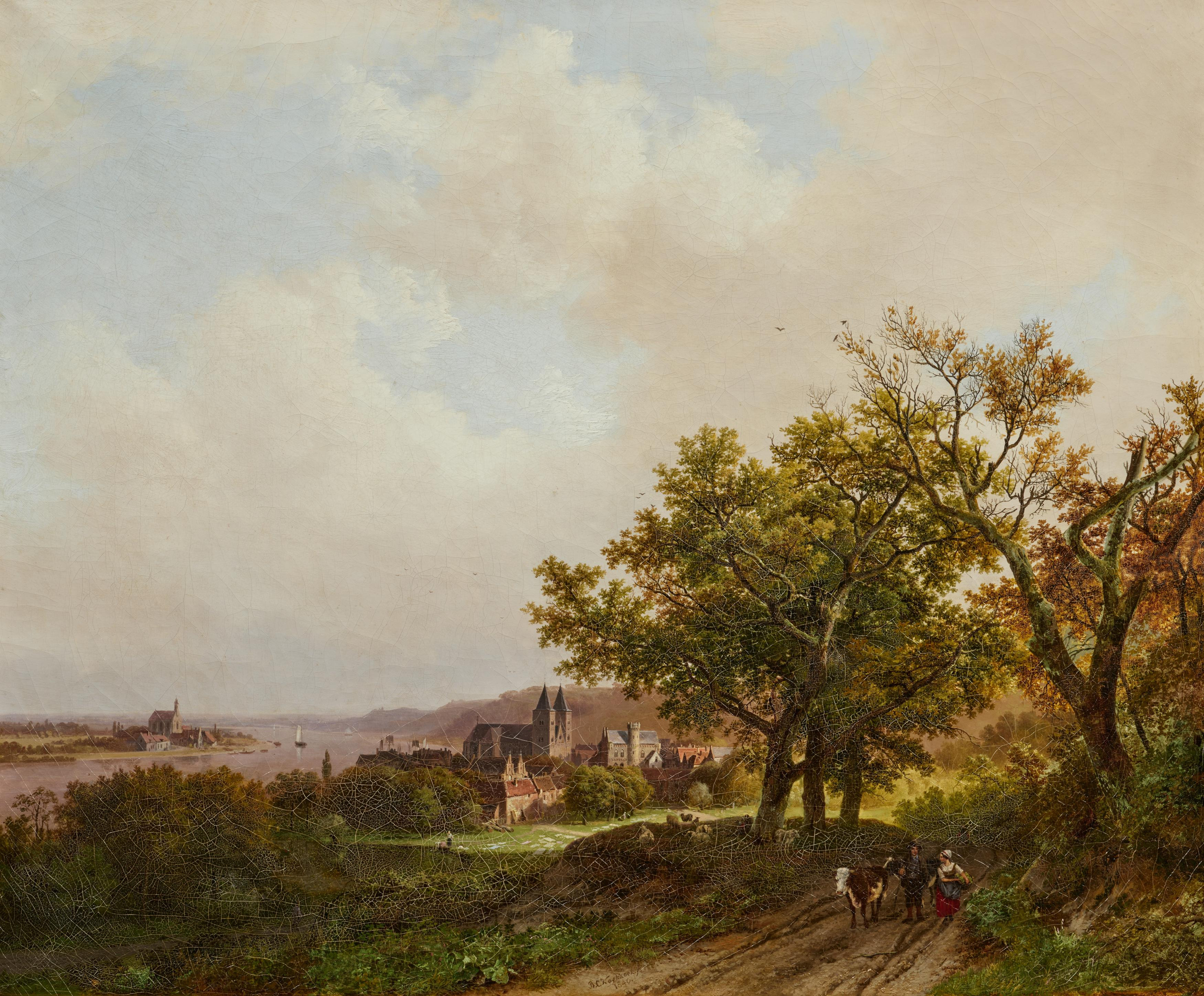KOEKKOEK, BAREND CORNELIS1803 Middelburg - 1862 Kleve
Title: Summer Landscape.
Wide landscape with city at a river.
Date: 1840.
Technique: Oil on canvas.
Measurement: 69 x 83cm.
Notation: Signed and dated lower centre: "B.C. Koekkoek ft / 1840".
Frame: Framed.
Verso:
On the stretcher label Galerie Spielhagen, Koblenz and stamp Kunsthandel Eduard Schulte, Berlin.
Cf. literature:
F. Gorissen: B.C. Koekkoek 1803-1862. Werkverzeichnis der Gemälde. Düsseldorf 1962, no. 40/66: illustrated here is a very comparable river landscape of the same year from the Amsterdam Gemeentemuseum.
Provenance:
Private ownership, Germany.
From a slight hill, the painter looks out over an expansive summer river landscape. In the centre of the picture, a small town spreads out along a mighty river, dominated by two late medieval buildings: a two-towered brick church and a historic town hall with a central stair tower. With its twin-towered façade, the church is reminiscent of the former collegiate church in Kleve, the former ducal town where Koekkoek had lived with his family since 1834. Opposite the church, the town hall stands out, reminiscent of the typical Lower Rhine brick building with a central stair tower in Kalkar. The gabled houses are also modelled on the late medieval town of Kalkar. Outside the town gates, women bleach their laundry in the meadow. In the foreground on the right, a couple of farmers are returning home from the town with their cows and purchases. Under the shady tree, a shepherd tends his flock of sheep. The wide river flows calmly upstream past a farmstead with a small chapel.
Koekkoek painted this picture in 1840, and a very similar painting in terms of execution and composition can be found in the former Fodor Collection in the Amsterdam Museum (Gorissen, B.C. Koekkoek, 1962, no. 40/66). Here, too, there are historical buildings in a central position: the two-towered church there is inspired by the
Romanesque church in Wissel near Kalkar. Koekkoek never takes models from nature: they serve him as a source of inspiration, which he uses very freely. After Koekkoek settled in Kleve in 1834, he quickly achieved European fame. He received gold medals at the Salons in Brussels, The Hague and Paris, as well as several knighthoods and honours.
The painting was created at a crossroads in Koekkoek's development: the painting, which is still unknown today, is one of the last expansive panorama-like landscapes. In the 1940s and 1950s, Koekkoek mainly created dense forest landscapes in which he demonstrated his painterly virtuosity, but which lack the freshness of his earlier works.
We are grateful to Guido de Werd, Cologne, who confirmed the attribution after examining the present painting in the original.



